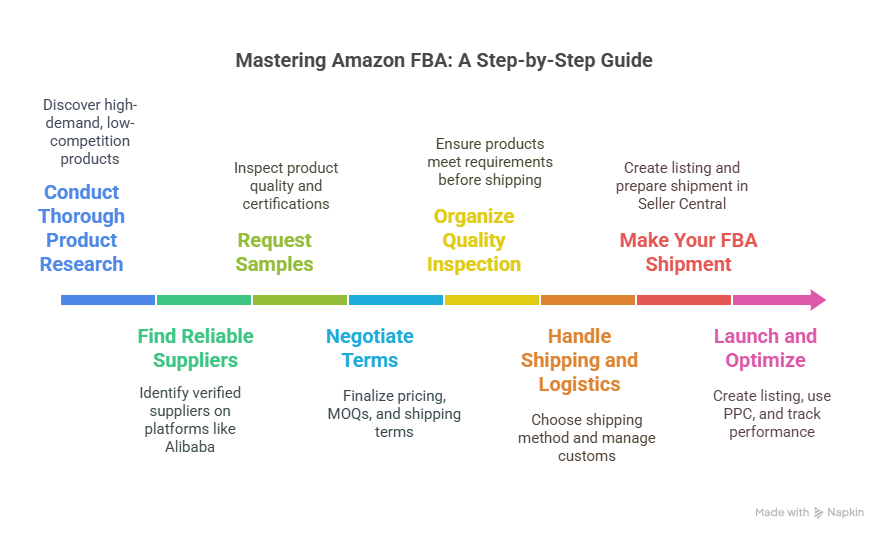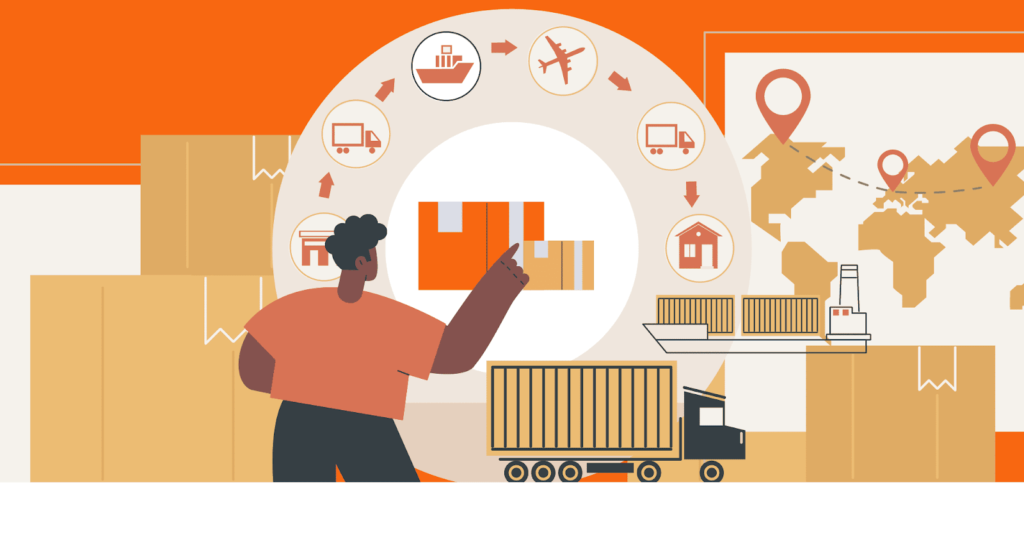How to Source Products from China for Amazon FBA (Step-by-Step Guide)
If you are considering starting or expanding an Amazon FBA business, sourcing products from China is a cost-saving and profitable idea. With millions of suppliers and manufacturers, China is still one of the favorite destinations for e-commerce business owners. But to get it right, you must have a solid strategy.
In this step-by-step guide, we’ll take you through the whole process from product research to having your goods in Amazon’s warehouse—so you can skip the expensive mistakes and create a successful FBA business.
Conduct Thorough Product Research
You need to select the right product before you even consider sourcing.
Tips for successful product research:
- Utilize tools such as Jungle Scout, Helium 10, or AMZScout to discover high-demand, low-competition products.
- Emphasize light, non-breakable products with a price range of $15–$50.
- Steer clear of trademarked or patented products.
- Look at customer feedback on current listings for guidance on how it can be improved.
Pro tip: Seek products with an apparent opportunity to differentiate—improved packaging, materials, or added value.
Find Reliable Suppliers
After deciding on your product, it’s time to identify a supplier.
Well-known platforms to source suppliers:
- Alibaba.com
- 1688.com (Chinese version of Alibaba handy if you can speak the language or have an agent)
- GlobalSources.com
- What to search for in a supplier:
- Verified supplier or Gold Supplier status (on Alibaba)
- Trade assurance (for safe payments)
- High transaction volume and positive reviews
- Responds well and communicates well
Pro tip: Contact a minimum of 5–10 suppliers to compare prices, MOQs, and production lead times.
Request Samples
Never order a bulk amount without first inspecting the product.
What to inspect in your sample:
- Build quality and material
- Packaging
- Branding potential
- Product dimensions and weight
- Any certifications necessary for selling on Amazon (e.g., CE, FDA)
Make sure to compare several samples if you contacted multiple suppliers.
Negotiate Terms
After you’re happy with a supplier, negotiate the terms before you place your order.
Key things to negotiate:
- Price per unit
- MOQ
- Production time
- Payment terms (e.g., 30% deposit, 70% after inspection)
- Shipping terms (Incoterms such as FOB or EXW)
Pro tip: Be polite but assertive gaining a good relationship with your supplier can translate to improved service and adaptability in the long term.
Organize Quality Inspection
A third-party inspection agency ensures the products meet your requirements before leaving the factory.
Popular inspection agencies:
- QIMA
- Asia Inspection
- V-Trust
- You can employ them to carry out:
- Pre-production inspection
- During production inspection
- Pre-shipment inspection
Even when your supplier is reputable, inspections save you from costly returns or negative reviews.
Handle Shipping and Logistics
You’ll need to ship your goods to Amazon’s fulfillment centers, either directly from China or through a prep center in the U.S.
Shipping methods:
- Air freight (faster, more expensive)
- Sea freight (cheaper, slower)
- Express shipping (e.g., DHL, FedEx for smaller shipments)
- Use a freight forwarder to manage shipping and customs. Some well-known ones include:
- Flex-port
- Freights
- Ship-Bob (if you’re also looking for U.S. warehousing)
Don’t forget to:
- Label products per Amazon’s FBA requirements
- Prepare packaging as per Amazon’s requirements
- Supply shipping information to Amazon through Seller Central
Make Your FBA Shipment
After sending your products, log in to Amazon Seller Central to make a shipment.
Steps are:
- Create a listing (if it is not already done)
- Select “Fulfilled by Amazon” (FBA)
- Fill product dimensions and weight
- Create and place FNSKU labels
- Select shipping method and destination fulfillment center
- Amazon will provide you with the appropriate warehouse address and shipment ID for tracking.
Launch and Optimize
After your products have shipped and are verified, it’s launch time!
How to successfully launch:
- Create a great product listing with solid keywords
- Utilize high-quality product images
- Activate PPC campaigns (Amazon Ads)
- Provide promotions or discounts to drive reviews
- Continuously optimize your listing, track performance, and watch inventory levels to prevent stockouts.

Conclusion
Amazon FBA sourcing from China need not be scary. With a methodical approach—researching, screening suppliers, checking products, and controlling logistics—you can establish a sound supply chain and grow your business with confidence.
Tip: After you find a good supplier, establish a long-term relationship it can result in lower prices, quicker production, and more flexibility as you grow.
